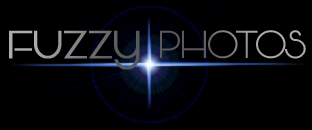Cover Image of The Reflector Magazine: December 2017, Vol. 70, No. 1
| Image Links | |
| Published image | Full resolution |
| Target Information | |
| Main Target Designation(s) | Total Solar Eclipse, 73% Umbral Depth |
| All Exposures | |
| Date(s) of acquisition | 2017Aug21, 18:24:30 - 18:27:05 UT |
| Location | Hopkinsville, KY |
| Capture resolution | 4608x3456 |
| Exposures | |
| HDR Source | 5 x 1/3200s 5 x 1/1600s 5 x 1/1000s 5 x 1/500s 5 x 1/250s 4 x 1/125s 4 x 1/60s 3 x 1/30s 3 x 1/20s 3 x 1/13s 2 x 1/8s 2 x 1/5s 1 x 0.6s 1 x 1s |
| Equipment & Software | |
| Imager | Olympus Air A01 |
| Telescope/Lens | Orion 8" f/3.9 Astrograph |
| Focal Length | 800mm |
| Mount | Celestron CGEM (DIY Hypertuned) |
| Collimator | Howie Glatter 650nm laser |
| Focusing | Moonlite CR with V2 High-res Stepper |
| Acquisition | Custom Python Sequencer |
| Processing | PixInsight 1.8, Lightroom CC, Photoshop CC |
Thank goodness for decent weather when you need it!
There is nothing that could have prepared me for what it would be like to experience a total solar eclipse. Â In fact, the experience was so powerful, I was hesitant to even try to put together a totality image, as I knew it wouldn't do the event justice. Â There is just no way to capture the look, ambiance, and emotion present. Â But when the weather does (mostly) cooperate, and you have weeks of work behind you in putting together a custom automation program specifically to capture this magnificent event, it's hard to keep the frames buried on the memory card.
Putting this image together was quite unlike any astro processing I've done to-date. Â The dynamic range of totality is enormous, from the blazing solar prominences to the delicate dim strands of the solar corona. Â In order to properly capture and process this in a way that makes this range of features present, I took and combined shots across 14 different exposure lengths from 1/3200s to 1s. Â (In fact, I did more than this! Â But being my first total solar eclipse, there was quite a bit of guesswork, and therefore some exposure lengths that offered no usable data.) Â Once combined to a single image, I performed compression of the dynamic range and, along with various transformation and equalization processes, was able to highlight the marvelous coronal streamers from our star, along with some dancing solar prominences and a bit of earth-shine on the moon. Â All in all, the image is more than I could've hoped for, given there was only a short 2.5 minutes available to capture it, leaving little room for error and no room for troubleshooting.
Still yet, the image doesn't do the event justice. Â However, I have teased and worked the data in a way that is perhaps atypical of many totality images, but so in a way that lends a view to a few things that I recall specifically from my experience:
- Many totality images present a black background. Â I think a primary reason of this is that most of the exposures used (even in HDR photos) are short in order to capture the bright detail near the moon's circumference. Â However, these short exposures leave little sky data and therefore little room for color. Â Totality's sky is, in fact, not black. Â I recall a deep, deep blue (almost purple) sky color near the corona that shifted to magnificent sunset-like colors as you approached the horizon. Â I found some of this color in my longer (e.g. 0.6s) exposures, and chose to let it present itself here.
- One of the neatest things I experienced was when the moon (moving right-to-left in this image) moved past maximum totality and began to reveal the solar prominences on the right (west) side of the sun. Â I specifically locked onto a hot pink area at the bottom-right, the brightest in my image here. Â To my surprise, they were pink. Â And to my surprise, they were pink in my frames as well! Â I let these prominences sit in the color captured by the camera, and at a saturation that is akin to that which I experienced.
- A good number of outstanding totality images present the "earthshine" of the moon in stupendous fashion, where specific craters and other surface features can be discerned. Â I took proper exposures for this, but for one reason or another (probably high-cloud related), I didn't have the data to present this. Â However, the moon's earthshine is certainly not something you see during the event. Â In this way, I feel that the minimal amount of lunar detail I expose in this photo is much closer to the reality of my experience, albeit not as powerful as many of the other wonderful photos out there of these events.
This image still doesn't do the event justice, but it does a good job reminding me of certain aspects of my experience, and reminds me that this rare event is one worth taking efforts to see again in the future. Â It is truly one of the most spectacular natural phenomenon I have ever experienced!
Â

